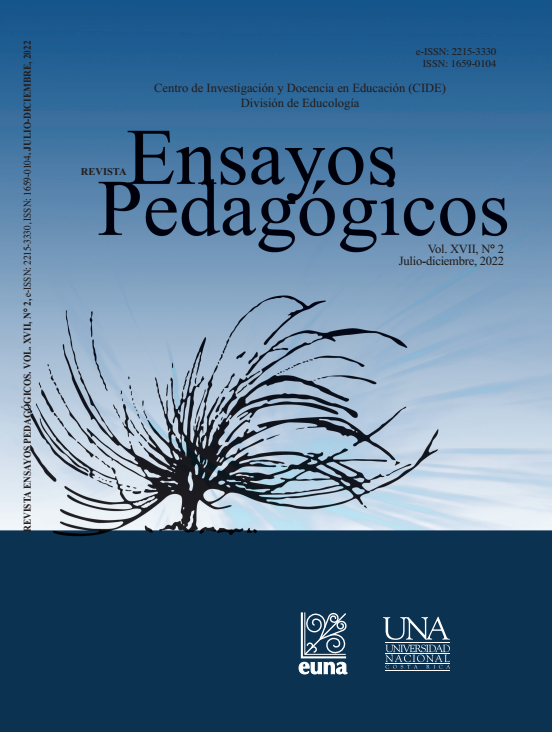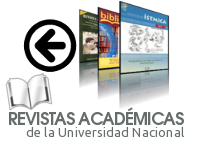Comparación del programa Escuelas Promotoras de Paz sobre la autoeficacia hacia la actividad física en escolares de Honduras y Nicaragua
DOI:
https://doi.org/10.15359/rep.17-2.7Palabras clave:
Educación física, intervención, niños, recreosResumen
El objetivo del estudio fue comparar el efecto de la intervención Escuelas Promotoras de Paz sobre la autoeficacia hacia la actividad física de estudiantes en dos escuelas de países centroamericanos: Honduras y Nicaragua. Las personas participantes de este estudio fueron 216 escolares (n = 108 en cada país), de edades entre 8 y 13 años (10,49 ± 0,95 años). Se aplicó el cuestionario de autoeficacia hacia la actividad física en estudiantes (Aedo y Ávila, 2009). En esta intervención se utilizó el Modelo Ecológico, basado en clases de educación física dos veces por semana, recreos activos y apoyo social, para promover la actividad física del estudiantado. Se encontró que las personas escolares de Honduras tuvieron peor percepción de autoeficacia que el estudiantado de Nicaragua. También se evidenció que las niñas indistintamente de su país presentaron mejor autoeficacia que los niños, lo que aumenta las experiencias exitosas a la hora de hacer las actividades físicas incluidas en la intervención. La autoeficacia percibida de los niños disminuyó en el transcurso del estudio, mientras que las niñas mantuvieron estable o tendieron a mejorar su autoeficacia. Futuros estudios deben considerar la respuesta diferenciada por sexo en esta variable, para generar intervenciones más efectivas.
Referencias
Aedo, A., y Ávila, H. (2009). Nuevo cuestionario para evaluar la autoeficacia hacia la actividad física en niños. Revista Panamericana de Salud Pública, 26(4), 324-329. https://iris.paho.org/bitstream/handle/10665.2/9763/v26n4a06.pdf?sequence=1&isAllowed=y
Álvarez, C., Herrera, M., Herrera, E., Villalobos, G., y Araya, G. (2019). Sobrepeso, obesidad, niveles de actividad física y autoestima de la niñez centroamericana: un análisis comparativo entre países. Retos, 37, 238-246. https://recyt.fecyt.es/index.php/retos/article/view/71680
Álvarez, C. (2016a). Efectividad del programa ecológico Saltando por su salud en la promoción de la actividad física y la auto-eficacia en niños y niñas escolares de tercer grado. Revista Ensayos Pedagógicos, 11(1), 147-169. https://doi.org/10.15359/rep.11-1.8
Álvarez, C. (2016b). Entendiendo los factores que determinan la actividad física en el entorno escolar desde la perspectiva de los niños y niñas. MHSalud: Revista en Ciencias del Movimiento Humano y Salud, 13(1), 1-17. http://dx.doi.org/10.15359/mhs.13-1.2
Bandura, A. (1997). Self-efficacy: The exercise of control. Freeman.
Bortoli L., y Robazza C. (1997). Italian Version of the Perceived Physical Ability Scale. Perceptual and Motor Skills, 85(1), 187-192. https://journals.sagepub.com/doi/10.2466/pms.1997.85.1.187
Bonell, C. P., Fletcher, A., Jamal, F., Wells, H., Harden, A., Murphy, S., y Thomas, J. (2013). Theories of how the school environment impacts on student health: Systematic review and synthesis. Health and Place, 24, 242–249. https://doi.org/10.1016/j.healthplace.2013.09.014
Cataldo, R., John, J., Chandran, L., Pati, S., y Shroyery Shroyer, A. L. W. (2013). Impact of Physical Activity Intervention Programs on Self-Efficacy in Youths: A Systematic Review. ISRN Obesity, 2013, 1–11. https://doi.org/10.1155/2013/586497
Cigarroa, I., Sarqui, C., y Zapata, R. (2016). Efectos del sedentarismo y obesidad en el desarrollo psicomotor en niños y niñas: Una revisión de la actualidad latinoamericana. Universidad y Salud, 18(1), 156. https://doi.org/10.22267/rus.161801.27
Demetriou, Y., y Höner, O. (2012). Physical activity interventions in the school setting: A systematic review. Psychology of Sport and Exercise, 13(2), 186–196. https://doi.org/10.1016/j.psychsport.2011.11.006
Eime, R. M., Young, J. A., Harvey, J. T., Charity, M. J., y Payne, W. R. (2013). A systematic review of the psychological and social benefits of participation in sport for children and adolescents: Informing development of a conceptual model of health through sport. International Journal of Behavioral Nutrition and Physical Activity, 10(98), 1-21. http://www.ijbnpa.org/content/10/1/98
Geller, K. S., y Dzewaltowski, D. A. (2010). Examining elementary school-aged children’s self-efficacy and proxy efficacy for fruit and vegetable consumption. Health Education and Behavior, 37(4), 465–478. https://doi.org/10.1177/1090198109347067
Goh, T. L., Hannon, J., Webster, C., Podlog, L., y Newton, M. (2016). Effects of a TAKE 10! Classroom-Based Physical Activity Intervention on Third- to Fifth-Grade Children’s On-task Behavior. Journal of Physical Activity and Health, 13(7), 712-718. https://doi.org/10.1123/jpah.2015-0238
Hesketh, K. R., Lakshman, R., y Van Sluijs, E. M. F. (2017). Barriers and facilitators to young children’s physical activity and sedentary behaviour: a systematic review and synthesis of qualitative literature. Obesity Reviews, 18(9), 987–1017. https://doi.org/10.1111/obr.12562
Hynynen, S., Stralen, M. M., Sniehotta, F. F., Araújo-Soares, V., Hardeman, W., Chinapaw, M., Vasankari, T., y Hankonen, N. (2015). A systematic review of school-based interventions targeting physical activity and sedentary behaviour among older adolescents. International Review of Sport and Exercise Psychology, 9(1), 22-44. https://doi.org/10.1080/1750984X.2015.1081706
Ishii, K., Shibata, A., Sato, M., y Oka, K. (2014). Recess physical activity and perceived school environment among elementary school children. International Journal of Environmental Research and Public Health, 11(7), 7195-7206. https://doi.org/10.3390/ijerph110707195
Ickes, M. J., Erwin, H., y Beighle, A. (2016). Systematic Review of Recess Interventions to Increase Physical Activity. Journal of Physical Activity and Health, 10(6), 910–926. https://doi.org/10.1123/jpah.10.6.910
Jauregui U., E., López T., J., Macías S., A. N., Porras R., S., Reynaga E., P., Morales A., J. J. y Cabrera G., J. L. (2013). Autoeficacia y Actividad Física en Niños Mexicanos con Obesidad y Sobrepeso. Sport TK. Revista Euroamericana de Ciencias del Deporte, 2(2), 69-75. https://doi.org/10.6018/194641
Kain, J., Uauy, R., Leyton, B., Cerda, R., Olivares, S., y Vio F. (2008). Efectividad de una intervención en educación alimentaria y actividad física para prevenir obesidad en escolares de la ciudad de Casablanca, Chile (2003-2004). Revista Médica Chilena, 136, 22-30. http://dx.doi.org/10.4067/S0034-98872008000100003
Kibbe, D. L., Hackett, J., Hurley, M., McFarland, A., Schubert, K. G., Schultz, A., y Harris, S. (2011). Ten Years of TAKE 10!®: Integrating physical activity with academic concepts in elementary school classrooms. Preventive Medicine, 52(Suppl.), S43–S50. https://doi.org/10.1016/j.ypmed.2011.01.025
Lox, C., Martín, K. y Petruzzello, S. (2006). The Psychology of Exercise. HHP.
Maôano, C., Ninot, G., y Bilard, J. (2004). Age and Gender Effects on Global Self-Esteem and Physical Self-Perception in Adolescents. European Physical Education Review, 10(1), 53-69. https://doi.org/10.1177/1356336X04040621
Martínez, J., Castillo, L., y Granda, V. (2017).Formación inicial del docente de educación física y su desempeño profesional. EmásF: Revista Digital de Educación Física, 48, 83-95. https://dialnet.unirioja.es/servlet/articulo?codigo=6121667
Morano, M., Bortoli, L., Ruiz, M. C., Vitali, F., y Robazza, C. (2019). Self-efficacy and enjoyment ofenjoyment of physical activity in children: Factorial validity of two pictorial scales. PeerJ, 7, 1–12. https://doi.org/10.7717/peerj.7402
Organización Mundial de la Salud (OMS). (2020). Obesidad y Sobrepeso. Reporte. https://www.who.int/es/news-room/fact-sheets/detail/obesity-and-overweight
Parrish, A., Okely, A. D., Stanley, R. M. y Ridgers, N. (2013). The Effect of School Recess Interventions on Physical Activity. Sports Med, 43, 287–299. https://doi.org/10.1007/s40279-013-0024-2
Pawlowski, C. S., Tjørnhøj-Thomsen, T., Schipperijn, J., y Troelsen, J. (2014). Barriers for recess physical activity: A gender specific qualitative focus group exploration. BMC Public Health, 14(1), 1–10. https://doi.org/10.1186/1471-2458-14-639
Peterson, S. E., y Miller, J. A. (2004). Comparing the Quality of Students' Experiences During Cooperative Learning and Large-Group Instruction. The Journal of Educational Research, 97(3), 123-134. https://doi.org/10.3200/JOER.97.3.123-134
Reyes, R., Otero, E., Pastrán, R., Herrera-Monge, M. F. y Álvarez, C. (2018). Análisis del sobrepeso, obesidad, niveles de actividad física y autoestima de la niñez de León, Nicaragua. MHSalud, 16(1), 1-15. https://doi.org/10.15359/mhs.16-1.4
Ridgers, N. D., Fairclough, S. J., y Stratton, G. (2010). Twelve-month effects of a playground interventionplayground intervention on children’s morning and lunchtime recess physical activity levels. Journal of Physical Activity and Health, 7(2), 167-175. https://doi.org/10.1123/jpah.7.2.167
Saint-Maurice, P. F., Welk, G. J., Beyler, N. K., Bartee, R. T., y Heelan, K. A. (2014). Calibration of self-report tools for physical activity research: The Physical Activity Questionnaire (PAQ). BMC Public Health, 14(1), 1-9. http://www.biomedcentral.com/1471-2458/14/461
Sallis, J., McKenzie, T. L., Alcaraz, J., Kolody, B., Faucette, N., y Hovell, M. (1997). The effects of a 2-year physical education program (SPARK) on physical activity and fitness in in elementary school students. Sports, Play and Active Recreation for Kids. American Journal of Public Health, 87(8), 1328-1334. https://doi.org/10.2105/AJPH.87.8.1328
Salmon, J. y Timperio, A. (2007). Prevalence, trends and environmental influences on child and youth physical activity. Medicine and Sport Science, 50, 183-199. https://doi.org/10.1159/000101391
Sarkin, J. A., McKenzie, T. L., y Sallisy Sallis, J. F. (1997). Gender differences in physical activity during fifthgrade physical education and recess period. Journal of Teaching Physical Education, 17(1), 99-106. https://doi.org/10.1123/jtpe.17.1.99
Spence, J. C., Blanchard, C. M., Clark, M., Plotnikoff, R. C., Storey, K. E., y McCargar, L. (2010). The role of self-efficacy in explaining gender differences in physical activity among adolescents: A multilevel analysis. Journal of Physical Activity and Health, 7(2), 176–183. https://doi.org/10.1123/jpah.7.2.176
Trigueros, R., Navarro, N., Aguilar, J., y León, I. (2019). Influencia del docente de Educación Física sobre la confianza, diversión, la motivación y la intención de ser físicamente activo en la adolescencia. Cuadernos de Psicología del Deporte, 19(1), 222-232. https://revistas.um.es/cpd/article/view/347631/256811
Van Sluijs, E., McMinn A., y Griffin S. (2008). Effectiveness of interventions to promote physical activity in children and adolescents: systematic review of controlled trials. BMJ, 42(8), 653-657. https://doi.org/10.1136/bmj.39320.843947.BE
Vásquez-Bonilla, A., Zelaya-Paz, C., y García- Aguilar, J. (2019). Análisis de sobrepeso y obesidad, niveles de actividad física y autoestima en escolares de San Pedro Sula, Honduras. MHSalud Revista en Ciencias del Movimiento Humano y Salud, 16(2), 1-14. http://dx.doi.org/10.15359/mhs.16-2.5
Ward, D., Saunders, R., y Pate, R. (2007). Physical Activity Interventions in Children and Adolescents. Human Kinetics Publishers.
Willenberg, L. J., Ashbolt, R., Holland, D., Gibbs, L., Macdougall, C., Garrard, J., Green, J. y Waters, E. (2010). Increasing school playground physical activity: A mixed methods study combining environmental measures and children's perspectives. Journal of Science and Medicine in Sport, 13(2), 210-216. https://doi.org/10.1016/j.jsams.2009.02.011
Descargas
Publicado
Cómo citar
Número
Sección
Licencia
La Revista Ensayos Pedagógicos está suscrita a la Licencia Creative Commons Atribución-NoComercial-SinDerivadas 4.0 Internacional, lo cual implica la posibilidad de que tanto las personas autoras como las personas lectoras puedan, de forma gratuita, descargar, almacenar, copiar y distribuir la versión final aprobada y publicada (post print) del artículo, siempre y cuando se realice sin fines comerciales, no se generen obras derivadas y se mencione la fuente y autoría de la obra. Asimismo, la Revista Ensayos Pedagógicos declara que toda persona autora conservará a perpetuidad los derechos de autoría de su ensayo o artículo.









